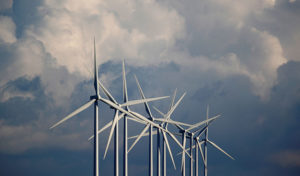 Testing the winds in Cambodia’s energy sector
Testing the winds in Cambodia’s energy sector
4 December 2017 – Previous studies have concluded that wind energy has significant potential in Cambodia. Reuters
A new study on wind energy and its potential to diversify Cambodia’s energy sector is now being conducted, with results expected for mid next year, according to a representative of the Ministry of Mines and Energy.
Singapore-based Blue Circle – a developer of renewable energy products with operations in Thailand, Vietnam, and Indonesia – has been granted permission to carry a feasibility study for a wind energy project, said Victor Jona, director-general of MME’s department of energy, adding that the company is now collecting data.
The study focuses on wind energy’s potential in coastal provinces, Mr Jona said.
“Once the report is finished, the company will invest if potential is found. If not, the document will still be a valuable source of information for the industry,” Mr Jona said.
“To guarantee energy security, we need to have multiple energy sources; this is why the study is important,” Mr Jona explained.
Han Phoumin, energy economist at the Economic Research Institute for Asean and East Asia, welcomed the study and asked for more research on the subject.
“It is important that the ministry allows companies to develop mini-grids like in Bavet for their own consumption,” Mr Phoumin said.
“Mini-grids can be connected to the national grid because solar and wind energy is intermittent. When they generate power at a surplus, they need to be able to sell that electricity back to the grid.”
A few Japanese companies have also done studies on wind power in the country, showing, to a degree, that it has great potential, said Mr Jona.
This, however, has not altered official policy, with Cambodia’s energy policy still overwhelmingly reliant on hydropower dams and coal.
Total energy consumption in the kingdom now amounts to 2,000 megawatts per year, 60 percent of which is generated from the country’s six hydropower dams, while 20 percent is imported – 15 percent from Vietnam, 4.5 percent from Thailand, and 0.5 percent from Laos. The rest of the energy comes from biomass and coal-fired plants, according to the ministry.
Source: http://www.khmertimeskh.com/5093692/testing-winds-cambodias-energy-sector/

